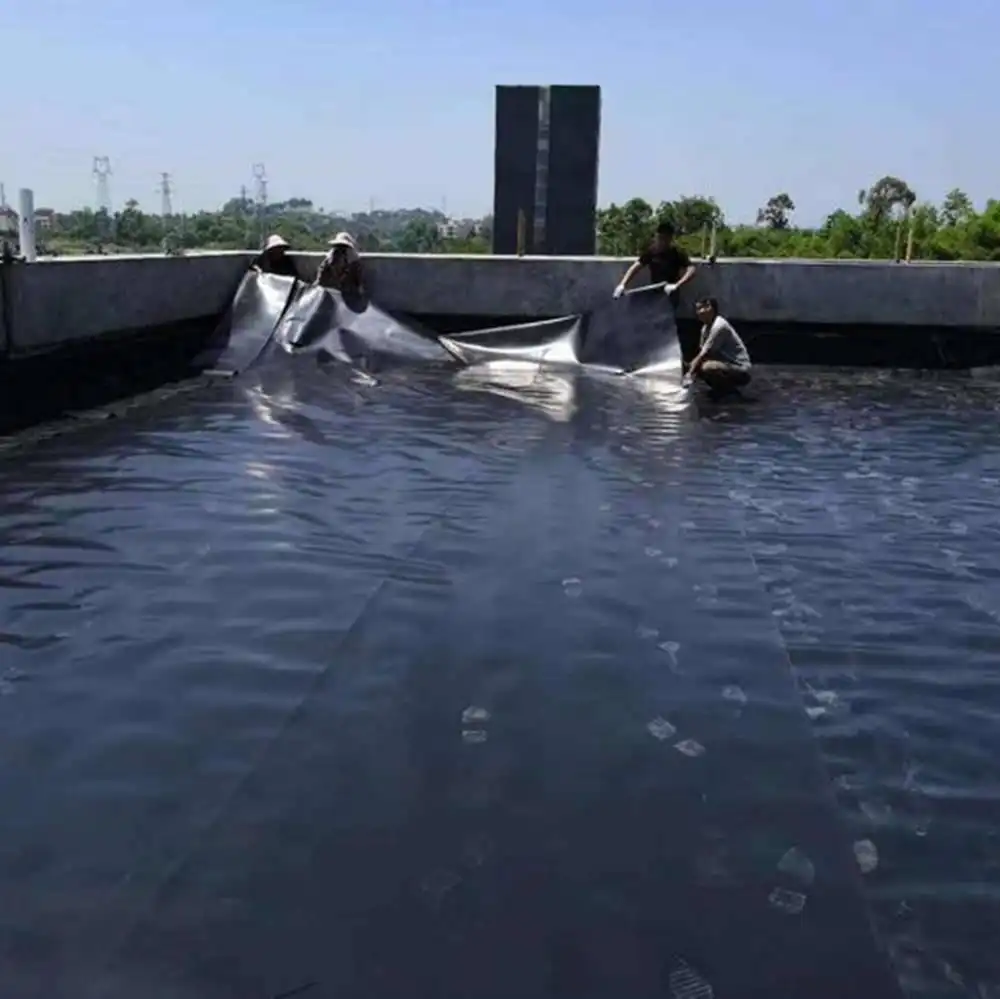
How to use HDPE anti-seepage film for roof waterproofing
Welding of Folding Geomembrane
1. The welding process of the hot wedge welding machine is divided into: adjusting the pressure, setting the temperature, setting the speed, checking the overlap of the weld seam, installing the film, entering the machine, starting the motor, and pressurizing the welding.
2. There should be no oil stains or dust at the joints, and the overlapping surface of HDPE geomembrane should not be sandwiched with mud
Sand and other debris must be cleaned before welding when there are any debris present.
3. At the beginning of welding every day, a 0.9mm trial weld must be conducted on-site first × A 0.3mm specimen with a lap width of no less than 10cm shall be subjected to peel and shear tests on site using a tensile machine. Once the specimen is qualified, it can be welded using the adjusted speed, pressure, and temperature at that time. The date, time, and ambient temperature should be indicated on the sample. During the welding process of the hot wedge welding machine, it is necessary to pay attention to the operation of the welding machine at all times, and adjust the speed and temperature according to the actual situation on site.
4. The weld seam should be neat, beautiful, and free from slipping or jumping.
When the length of the geotextile membrane is not enough, it needs to be longitudinally spliced. The transverse weld seam should be welded first, and then the longitudinal weld seam should be welded. The transverse weld seam should be T-shaped with a distance of more than 50cm and should not cross.
6. Adjacent geotextile membrane welds should be staggered and overlapped as much as possible. The nodes formed between membrane blocks should be T-shaped, and cross shaped joints should be minimized as much as possible. Squeeze welding machines should be used to strengthen the intersection of longitudinal molds and weld seams.
7. When welding the film, it is not allowed to press out dead folds. When laying HDPE geomembrane, the expansion and contraction deformation caused by temperature changes should be reserved according to the local temperature change amplitude and the performance requirements of HDPE geomembrane.
When the temperature control of the handheld welding machine indicates that the welding machine temperature is below 200 ℃, it should be dusted off with a clean cloth or cotton yarn before welding. If necessary, it should be re polished and avoid wiping with hands.
When there is condensation, moisture, mud, and other influences at the joint, welding should be carried out after treatment.
10. Welding cannot be carried out during rainy periods or when there is moisture, dew, or heavy sand at the joints, except when protective measures are taken.
When the temperature is below 5 ℃, construction should not be carried out according to the specifications. If construction is necessary, the welding machine should be preheated before welding.
During the welding process of the extrusion welding machine, the slider of the gun head should be checked regularly. If the wear is severe, the slider should be replaced in a timely manner to avoid damaging the film surface.
13. When welding geomembranes, a generator with good voltage stability should be used for power supply. In special circumstances, when using local electricity, a voltage regulator must be used.
.png)
.png)












